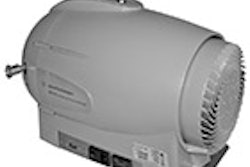This article originally ran in the June 2013 issue of Food Manufacturing.
The Food Manufacturing Brainstorm features industry experts sharing their perspectives on issues critical to the overall food industry marketplace. In this issue, we ask: What plant sanitation techniques can food processors employ to improve food safety in their facilities?
Food safety hinges on identifying and reducing contamination risks at critical exchange points. Using color-coded, bacteria-resistant vacuum tools is a highly effectively means to minimize the chances of cross contamination during housekeeping. Further, producers should look for vacuum accessories that can be sanitized with common disinfecting solutions or via autoclave.
Many food processors have found color-coded accessories practical and effective because color is easily communicated to crew members regardless of native language, and color schemes are more easily memorized than other systems.
While there are no federal or state regulations for color-coding cleaning tools, most examiners view this type of system positively during inspections. An informal system used in many food production facilities assigns black for floors, red for raw meat, blue for seafood, green for produce, white for finished food and yellow for hazardous areas.
Nilfisk offers a selection of vacuum tools in all of these colors. Most of its tools are made of food-grade nitrile butadiene rubber (NBR), which is extremely dense so it is less likely to pick up and carry pathogens. It is also easily sanitized. Bristles on brush accessories are made of polypropylene, which does not absorb water, bacteria, grease, petroleum products, detergents, sanitizers or solvents. Polypropylene can be autoclaved and it rinses clean and dries quickly.























